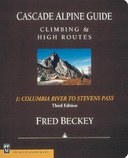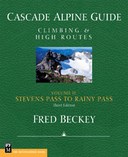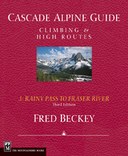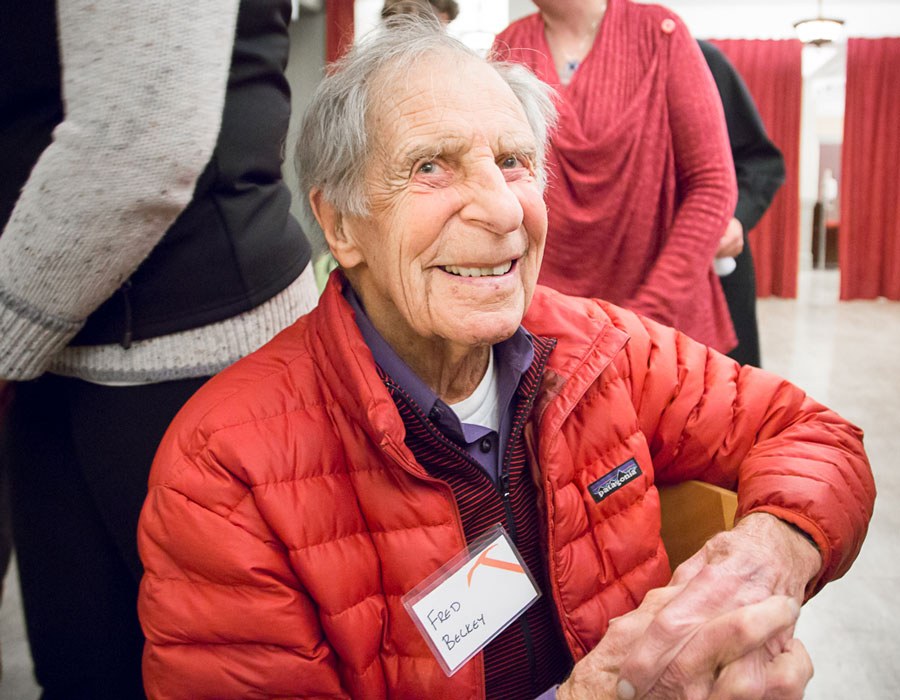
by Mary Hsue, Director of Development
Mountaineer climbers in 1939 were well aware of their unparalleled good fortune. Only the highest Northwest peaks had been climbed, and all a young climber had to do to score a first ascent was head for the nearest blank spot on the map. Many of the mountains hadn’t even been surveyed, and the climbers often went without benefit of a map. Often they explored the area first and returned later, relying on their own notes to reach the summit.
In 1939, Lloyd Anderson, with Clinton Kelley and Jim Crooks, made the first ascent of Sinister Peak, near Dome Peak. Anderson, with Kelley and fifteen year-old Fred Beckey, were the first climbers to the summit of Mount Despair.
In 1942, brothers Helmy and Fred Beckey shocked the climbing world by making the second ascent of Mount Waddington in the British Columbia Coast Range. They did this by simply hiking in and climbing the peak as if it were a nearby Cascades summit, despite earlier attempts by experienced teams in the years since the peak was first climbed in 1936. Fred Beckey, who would go on to establish one of the world’s most impressive records of first ascents, was nineteen at the time. His younger brother had just turned seventeen.
Fred Beckey would later recount: “Illness forced Erik (Larsen) to return to civilization the second day, but Helmy and I continued over the meager trail beside the raging Franklin River under 60- and 70-pound packs.”
Beginning with this startling assault on Mount Waddington at such a young age, Fred Beckey’s climbing exploits would become the stuff of legend. His unblinking focus on the summit became something of a Beckey trademark.
His pace and commitment were unrivaled. Many mountaineers considered it an honor to climb with him, but a number could not find the energy or time to be involved in more than a few of his ascents.
Walt Varney described one of the early climbs in the 1943 annual, an ascent on Kangaroo Ridge in the Washington Pass area of the North Cascades:
“Mushroom Tower, 8,400 feet, could have no other name because it was just that. A stratum of soft rock has worn out, leaving the dome sitting on a thick column with an overhanging pitch all around. It appears unclimbable except in one spot. And this pitch, Fred and Helmy insist, is the toughest one they have ever climbed.
“From a platform as big as a table, a three-man shoulder stand had to be used to get Fred over the 12-foot overhang onto a 10-foot slab that wasn’t more than 70 degrees but had no holds or piton cracks. How Fred wormed up by traction of the palms of his hands at hip level, with legs more or less useless, is a mystery to him, too. Helmy and Walt had to climb up the fixed rope.
“On the table, we three tied ourselves so short that if Fred had slipped and missed the table, we could have held him, yet with nothing but 900 feet of air below, it would have been quite a thrill.”
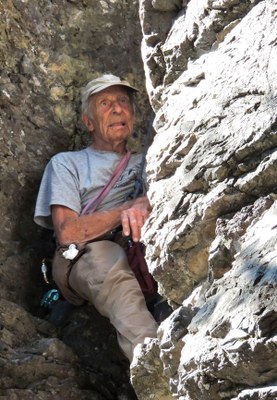
Descriptions of climbs in previous Mountaineer annuals had seldom noted the exact techniques climbers used, probably because no real technique was involved. But from this point on it became almost a matter of pride to list the techniques employed, especially in accounts by Fred Beckey.
After graduating from the University of Washington, Beckey pioneered a lifestyle that revolved around climbing, at times living out of the trunk of his car as he drove around the country in a quest for new climbs and new partners. Many climbers have followed Beckey’s inspiration over the years, embracing this nomadic lifestyle for the sake of climbing. Aside from his climbs, Beckey’s crowning achievement has been his three-volume Cascade Alpine Guide, now published by Mountaineers Books, which evolved out of his earlier book, the Climber’s Guide to the Cascade and Olympic Mountains of Washington. The Cascade Alpine Guide remains indispensable for anyone climbing in the Cascades.
This was an excerpt from Mountaineers: A History by Jim Kjedlsen with a forward by Mary Hsue, Director of Development. It originally appeared in our March/April 2015 issue of Mountaineer magazine. To view the original article in magazine form and read more stories from our publication, click here.
 Mary Hsue
Mary Hsue
